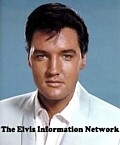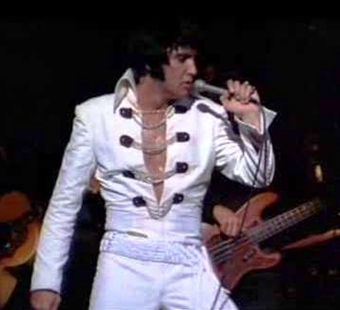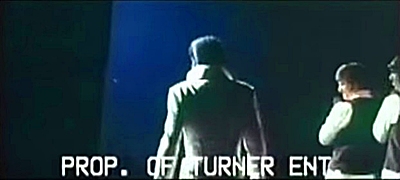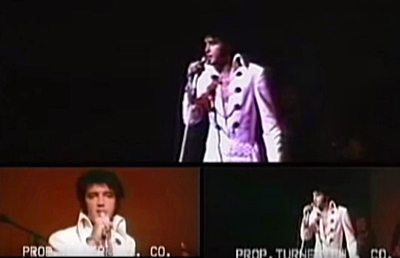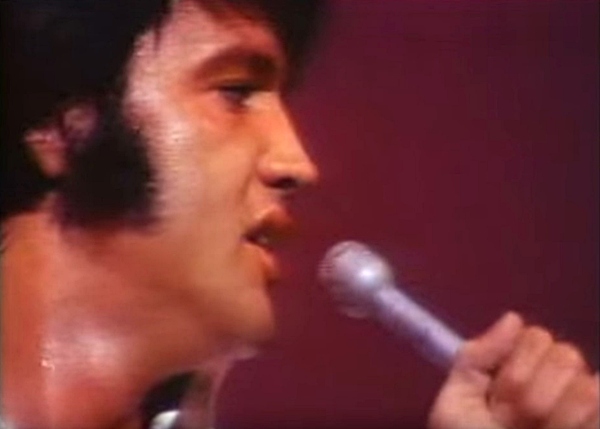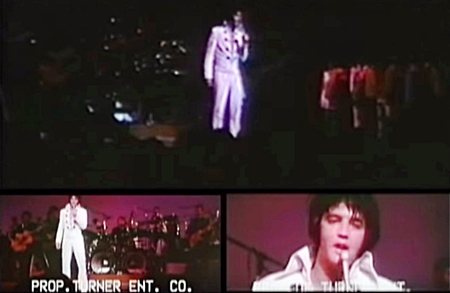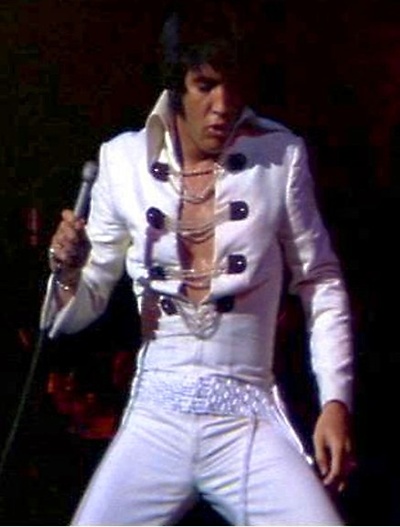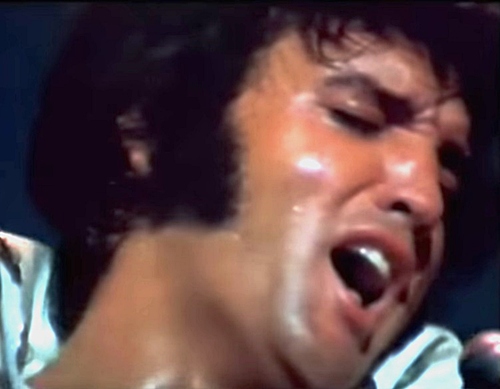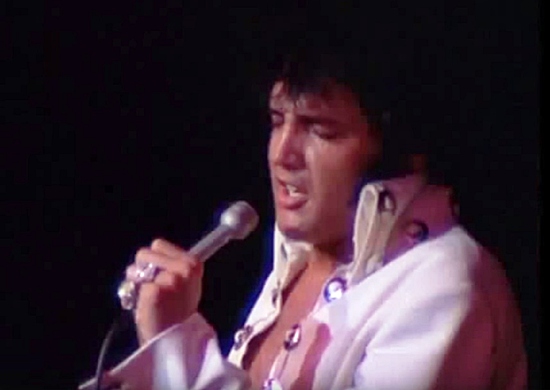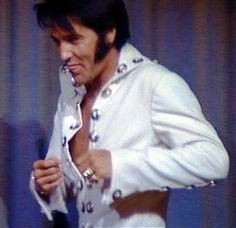 |
 |

George Smith, author of next year's publication "Walk A Lonely Street: Elvis Presley, Country Music & The True Story of Heartbreak Hotel", wrote this marvellous article for the FECC forum about Elvis' stunning performance on August 12th 1970 and kindly offered it to EIN so that more Elvis fans could appreciate what a truly stunning concert it was. Elvis’ performance from the midnight show at the Las Vegas International on August 12, 1970 has been described by his record company as "Probably the best live concert ever recorded by Elvis Presley." I well recall purchasing the set, when first released in June 2000, rushing home to listen specifically to the concert disc. I flicked rapidly through the tracks, expecting revelation or some kind of quick musical high but, disappointingly, none came. Sure, it was a great set list and Elvis was in fabulous voice, but I quickly lost interest and found solace in discs 1 and 3 instead. Several weeks later, with more time on my hands, I set aside a couple of hours to properly revisit Elvis' live show. At the end of the CD (and the concert), I was convinced that the producers were guilty not of hyperbole but of understatement. The midnight show is not just "the best live concert ever recorded by Elvis Presley"; it is an almost spiritual experience. But, like most great albums and concerts of that nature, it cannot be rushed: one must sit and listen to the show in its entirety. Then, and only then, can the genius of Elvis the performer be fully appreciated. The show takes the form of a metaphorical sexual act with Elvis wooing, loving, and then ravishing his audience before twice taking it to an exhausting musical peak. (Thanks to fellow fans who’ve taken the time to upload the relevant YouTube clips – EIN apologies for low-res screen grabs. Links provided where possible)
Elvis 12 August 1970 - Non Stop Erotic Cabaret Part 1: In The Beginning 1: That’s All Right It had taken Elvis a year to finally pick out a (semi-) permanent opener for his act: August 1969 saw him kick off with "Blue Suede Shoes" and six months later he promoted "All Shook Up" to the top of the list. Having selected "That’s All Right" as his opener for the August 1970 season he would use it consistently for the next year and then infrequently after that. Both of the earlier choices are more obvious candidates being very much Elvis songs in ears of the general public, but there’s a pleasing sense of symmetry in the selection of his first single as the opener. A writer in the early ‘70s noted how delightful it was that Elvis had even considered using the song at all within his concert playlist. Elvis had also sung the track occasionally during the August 1969 season but I’m not aware of any existing tape which could shed light on his then approach to the song. The August 1970 performance is taken at an insanely fast tempo when compared to the 1954 debut single, all subtlety and charm replaced by speed and excitement, but it remains a striking and memorable opening to the gig. Surrounded by the glitz and glamour of Vegas, Elvis, in his chic, streamlined jumpsuit, opens his concert with a full-band-orchestra- and-backing-vocals version of a simple country blues song: this is brilliant in its inappropriateness.
Click to watch here on YouTube Intriguingly, and probably coincidentally, the opening quartet of songs (the mysterious "Tiger Man" aside) follows a chronological line from the summer of 1954 through to the summer of 1956: Elvis is inviting his audience back to their communal youth. For those too young to remember, it’s a simple invitation to (ahem) rock .. The most fascinating aspect of this particular version is that Elvis chooses not to accept the acoustic guitar when offered by Charlie Hodge - you can see as he strides up to microphone stand (and again at the very end of the song) that he is without instrument. I can’t think of any other post-comeback show when Elvis does not wear the guitar for the opening song. This, surely, is an indication that Elvis came out on stage that night with the absolute intention to wow the audience (in situ and in cinema) - he stepped out ready to give his all and more (see the notes on "Hound Dog" and "Medley: Little Sister / Get Back" for other thoughts on the absent guitar). As a final thought, if you look closely at TTWII and also TTWIISE, just before Elvis steps out of the wings, he’s wearing the chain suit which dates it to the midnight show of 11 or 12. A moment before Elvis moves, he growls to himself - he literally growls! What a fascinating insight into his pre-performance mind-set: Tiger Man indeed. 2: Medley: Mystery Train / Tiger Man
Click here to watch on YouTube On 10 August Elvis is still wearing his guitar (he discards it during the first solo) - at the midnight 12 August show we’re treated to the glorious sight of Elvis playing a very erotic air guitar before he explodes during the strobe-lit drum breaks. There’s a lovely visual moment during "Mystery Train" when Elvis smiles as he notices his fingers fluttering as they lightly grasp the microphone. It’s reminiscent of that moment in the ’68 Special where his hand trembles but the situation here is completely different - there are no nerves to conquer now, Elvis is simply unable to contain his energy. The left leg never stops shaking. The medley was introduced during Elvis’ first Vegas season and remained a popular favourite (with Elvis and the punters) for many years, but it’s the 1969-1970 performances that remain definitive. He’s in fabulous voice here, obviously in a great mood, and the band drives the song forward. There is an on-going debate with regard to its early-Elvis connections, but as a statement of sexual potency, if there’s a more arrogant lyric than "I’m the king of the jungle - they call me the Tiger Man", then I’ve yet to hear it. __________________________________________________________ 3: Hound Dog 4: Love Me Tender Elvis reverts to type for the third track, throwing in his first hit song of the show. Again, unusually, he performs without guitar but sadly very little seems to have been captured on film. Bizarrely, of course, Vegas is the spiritual home of "Hound Dog", it being the city where Elvis picked up on Freddy Bell’s interpretation in 1956. This take still has plenty of fire but it can’t compare with the shows from 1969 or even February 1970. Within a year or so, the song would have lost its spark completely but it serves its purpose here very nicely, thank you. I still have no idea how Elvis can so casually abuse his voice with the extreme shouting during the extended opening rap, when he attempts to laugh his audience into bed using one of his "strip your gears" monologues. Interestingly a male audience member shouts something like "Where’s your guitar?" and Elvis replies that he "can’t play it no more, man" and suggests that the guitar gets "caught up in my [jumpsuit] chains". This may indeed be the reason for the non-use of the guitar although having watched video clips from the previous midnight show when he also wore the chain suit I can’t see any evidence of wardrobe malfunction. Elvis lowers the musical tempo but raises the sexual tension by introducing his second hit of the evening, "Love Me Tender". Apart from the show-stopping "Suspicious Minds", this is his longest song of the show but of course this number has little musical value: it’s a chance for Elvis to get physical with his audience. Elvis also uses the song as a chance to laughingly reminisce about his early career and the Ed Sullivan Show, complementing this oldies-but-goldies section. Elvis is still using the Billy Goldenberg arrangement from 1968 (perhaps the last time he sang it totally seriously) and although this mega-hit would still continue to feature from time to time, it would eventually be replaced by "Love Me" as the early-in-the-show kisses and scarves number. At the 11 August dinner show Elvis used the song for his walkabout but he’s pacing the show better this evening and saves that (almost) unique experience for later. There’s a delightfully subtle "first lei I’ve had" double-entendre gag after the song in amongst the "I’ll be up in the balcony soon" and Gatorade patter. ___________________________________________________________ Part 2: If You Think This Is Good You Should’ve Been Here Last Night! 5: Just Pretend Elvis now launches into a trio of songs all which were featured in the previous midnight show in what could be arguably described as superior versions. In many ways the 11 midnight show seems like a dry run for this gig and this is an interesting point: the best concerts don’t necessarily feature the absolute and definitive performances of each song. The whole is often greater than the sum of the parts.
Watch here via YouTube This is a magnificent performance of a rarely used song. This is no longer the callow youth singing a civil war ballad: here we have the mature man of the world singing a wonderful and warm love song. Top drawer composition, top class performance. __________________________________________________________ 6: Walk A Mile In My Shoes Here’s a fabulous song which deserves to be better known. Those audience members who owned Elvis’ most recent RCA album would recognise it but for everyone else this was another new song. The previous midnight show saw Elvis use the unexpected but spine-tingling opening monologue lifted from Hank Williams’ "Men With Broken Hearts". Did he only use this once? If so, how fortunate that it was captured on tape and film.
Watch here on YouTube Note that the collars of Elvis’ suit are beginning to flatten by this point and this problem is common to both shows on 12 August. He’d worn the suits for the first time during the respective performances on 11 August and the collars remained sharp throughout: there was clearly a problem with the overnight dry-cleaning service. __________________________________________________________ 7: There Goes My Everything Yet another new song for the audience, Elvis (as with "Just Pretend") introduces an unreleased track from his recent Nashville sessions. This is taken just a breath faster than the studio take but the orchestration faithfully follows the overdubs laid down over the Nashville master about a month previously.
Watch here on YouTube Part 3: Under The Covers 8: Words
Watch here via YouTube 9: Sweet Caroline This track however, is the antitheses of its predecessor: if ever a song sounded like it might have been written for Elvis, this is it. He’d started using it in February 1970 and, like "Walk A Mile" he carried it over into the summer season. A glorious, warm interpretation of Neil Diamond’s 1969 classic, this was clearly a favourite of Elvis’: he would introduce Neil from stage a couple of weeks later.
As the applause from the previous song fades, James Burton kicks in with the distinctive guitar intro and the energy level of the show lifts several notches. The choreography is simple but effective and the song fits Elvis like a glove: this is one of the tracks that stayed with me as a child after watching TTWII for the first time and it remains a favourite. The delightful clip of Elvis’ white boots within the video, incidentally, if it comes from "Sweet Caroline" at all, comes from the previous day’s dinner show. 10: You’ve Lost That Lovin’ Feelin’
That he does this is down to three simple points: And it’s the arrangement that really does intrigue me with Glen Hardin credited on the TTWII sleeve. Elvis’ performance, vocally and physically, is pure theatre and here we see how much stagecraft he had learned over the 12 months since his comeback season. The restraint and tension during the first verse is remarkable and as Elvis spins around to face the audience, releasing the orchestra and backing vocalists, you can see the smirk on his face: he knows that this is very, very good. He’s living this song with his body: it’s as if he and Tutt are plugged into the same socket. When we hit the middle eight we enter Elvis fantasy land: the band and vocalists seem to step out of a Motown snakepit session onto a Vegas stage, and Elvis hasn’t sung this well since February 1969 (and when you think what he’d done in the interim, that’s praise indeed). The gag is fun but infuriating, but he manages to salvage the song with a spectacular final chorus and finale. This is the first show-stopper of the night and a genuine moment of artistic genius. _____________________________________________________________ Part 4: The Magic Moment And so the applause washes over him: Elvis is delighted with the performance. He returns to the back of stage to dry the sweat dripping from his forehead. The audience are sated, Elvis has taken them to a new height, and even fans who’ve previously seen him in Vegas haven’t witnessed the like of this. But Elvis isn’t done. Still pulsating with energy, he starts up the "woahohoh" refrain and his ever-alert band pick up the vamp. Looking for a place to jump in, Elvis leaps back into the middle eight and within a split second the band are there with him. The CD beautifully captures the excitement on stage and off. This time, there’s no gag to hide behind. This is straight Elvis, giving absolutely everything to a song as he did in that small combo in June 1968. This is the magic moment that transformed a great performance into perhaps the greatest. _________________________________________________________ Part 5: The First Orgasm 11: Polk Salad Annie as used in TTWII and TTWIISE
Watch via YouTube (new edit, not Aug 12) Elvis fans who’d heard the "On Stage" LP version must have been shocked at how stunning the visual performance was when they finally saw the TTWII documentary. This is a slow, visceral, sensual and fiery offering. As with "Sweet Caroline", it’s almost as if the song has been written with Vegas-Elvis in mind. Again, Tutt is connected to Elvis’ nervous system and the choreography doesn’t get more blatant than this: as the tempo picks up, Elvis brilliantly uses two tantalising crescendos before finally putting the audience out of its misery and sending them over the top into musical orgasm. Elvis follows this with post-coital physical contact; a hug, a kiss, a touch, as he then (amazingly) walked through the audience. Yes, he’d done this the previous day and undoubtedly this was a moment planned for the cameras but it is, none the less, astonishing. I grew up under the impression that Elvis stepped into the audience at every show! What is he doing here?! Who thought of this idea? It’s surely done just for the documentary. It’s an almost Christ-like moment. I’m listening for Sam Cooke’s "Touch The Hem Of His Garment" to be played over the stage monitors. He’s surrounded by minders but the audience really do reach him (witness his bedraggled state when he finally re-mounts the stage). Coming on top (if you’ll excuse the phrase) of the previous two songs the audience are now in a state of rapture; they’ll take whatever Elvis wants to give them. And he gives them exactly what they came for in the first place: hits. __________________________________________________________ 13: Introductions of Musicians __________________________________________________________ Part 6: For Ol’ Times’ Sake 14: Heartbreak Hotel 15: One Night 16: Blue Suede Shoes 17: All Shook Up Heartbreak Hotel: the great double-shrugs at the end of each line; glimpses of movement during the guitar solo One Night: the up and down motion over the first lines; the gentle hip thrusts at the beginning of the second verse; following the drums leading into middle-eight; Blue Suede Shoes: the arms during the intro; the wonderful motion during the guitar solo; gearing up and then delivering the arm pumping during the coda; the impossibly graceful imploding movement as the band kick in for the last bar - how does he do that! All Shook Up: the obvious thumps and pauses Elvis still displays great affection for these oldies and he continued to use them off and one for many years to come, subsequently with less effort that shown here. That Elvis wasn’t taking this section too seriously can be observed from the previous day’s performance when he was drinking a glass of Gatorade during the songs - Dino eat your heart out! A warm interlude, offering his lover a chance to catch her breath without reducing the excitement. __________________________________________________________ Part 7: The Sit-Down Shows Revisited 18: Medley: Little Sister / Get Back 19: I Was The One 20: Love Me 21: Are You Lonesome Tonight?
And yet again, Elvis surprises his audience. At this point, he should surely be heading for the finale but instead he pulls out his stool and straps on his electric guitar - listen to that applause! The gag ("Honey, I wouldn’t come out there again for love nor money") is hilarious and the ensuing performance is magnificent, the kind of moment that can only occur when an artist is supremely confident and relaxed, and his audience are compliant and receptive. Was this section a conscious decision to ape the ’68 special or had Sanders (documentary director) come independently to the same conclusion as Steve Binder (’68 Special director) - that when Elvis is relaxed and plugged in he is simply unbeatable. Either way, the next 8 minutes are wonderful. I don’t know who came up with the idea of joining "Little Sister" with "Get Back" and I don’t care. This is rock ‘n’ roll genius. Elvis sings wonderfully (Tutt sparkles too) and film of Elvis hammering away on electric rhythm is something I would have almost killed for in my early years as a fan. It elevates a man already looking impossibly cool into some kind of rock- god-like figure. A staggering moment, musically and visually.
"I Was The One" is fun: he kinda pretends he doesn’t know the words but the singing is breathtakingly good and his laughter is infectious and gorgeous. A little bit of nonsense for the old-timers: where shall we go now? Well, Elvis goes to "Love Me" and the audience goes bananas. Yes, it’s a parody but so was the original in a manner of speaking. No, it’s not as good as in ‘68 but it’s just wonderful nevertheless. There’s a great moment of intensity on his face towards the end. He means this performance: he’s feeling it and enjoying it. He was already using this song as a stand-up performance and he was beginning to understand the power it had over the audience. "Are You Lonesome Tonight" is curiously short (he’d generally throw in some kind of monologue). He’s drawn to this song, yeah there are options for fun but I get the impression he really likes it. He loves playing those bass notes; he’s messing with the song but having immense fun. This is a track that would feature regularly in his gigs from 1961 to 1977 and was always an audience favourite. Elvis hands back the guitar and dismisses this section with casual words but the power and contribution of this period of the show should not be underestimated. Part 8: The Second Orgasm 22: Bridge Over Troubled Water
"Bridge Over Troubled Water" is, like YLTLF, a new kind of showstopper for Elvis. It’s not physical; it’s not (altogether) bombastic. It’s emotional. It’s almost spiritual. It’s another song with a false ending, giving false hope of release. Listen to his singing: lovely deep notes, a gentle gospelly edge, high notes (he’s really stretching). The arrangement (thank you, BJ Thomas) is wonderful, there’s a sense of growing and unfurling. The lighting is perfect; his own backing singers sit and watch him sing, transported by this moment. During the finale, you can hear everything that Elvis had dreamed he could do on stage coming true. 23: Suspicious Minds
Watch here via YouTube (official version) The audience must be almost hysterical by now and this song must surely come down to a series of fleeting impressions: left leg shaking; he’s even mouthing the backing singers’ parts — he still loves this song; Elvis must be exhausted by now; a stunningly dramatic knee drop; still singing brilliantly; legs spread wide as he stands up again - he’s literally f*****g the audience; "Go to work!" and they do; gentle arm thrusting; fast arm thrusting; he brings down the volume with a shrug; he jokes with the Sweet Inspirations; a 360 degree spin and he’s back into it; a jack hammer movement; incredible deep knee bend and then the other way; again legs spread wide as he stands, loving the audience; windmill arms; he turns and performs to the back of the stage, urging the band on; every musician on stage is playing or singing; a sudden stop; a tremble which grows into a shake which explodes hysterically as do the audience. Unbelievable. 24: Can’t Help Falling In Love
I love you. __________________________________________________________ A stunning collection of individually brilliant moments, skilfully woven into one unforgettable concert at exactly the right point in his career. I think it highly unlikely that The Complete TTWII will ever see an official release but I can see no reason why this single concert is not legally available right now on DVD. To deny its genius and its release it an act of artistic criminailty.
Spotlight by George Smith (images & layout, Piers Beagley) Click here to comment on this article - To find out more about George Smith's future book "Walk A Lonely Street: Elvis Presley, Country Music & The True Story of Heartbreak Hotel" - Click here,
EIN Website content © Copyright the Elvis Information Network.
Elvis Presley, Elvis and Graceland are trademarks of Elvis Presley Enterprises. The Elvis Information Network has been running since 1986 and is an EPE officially recognised Elvis fan club.
|
|
